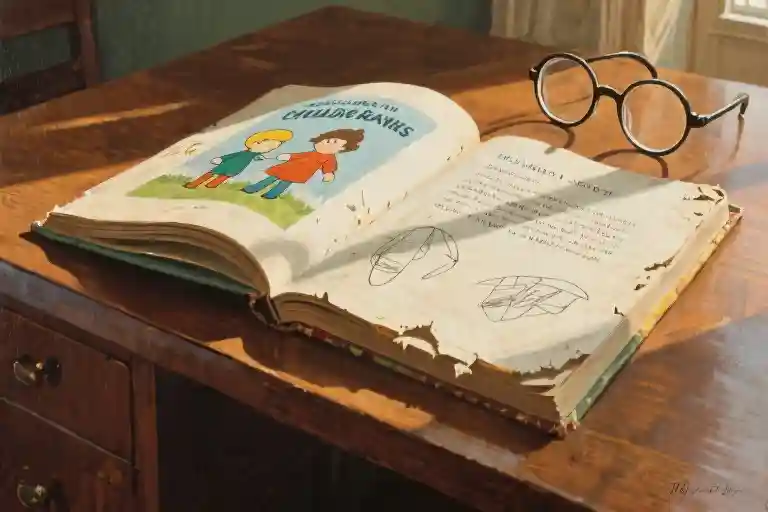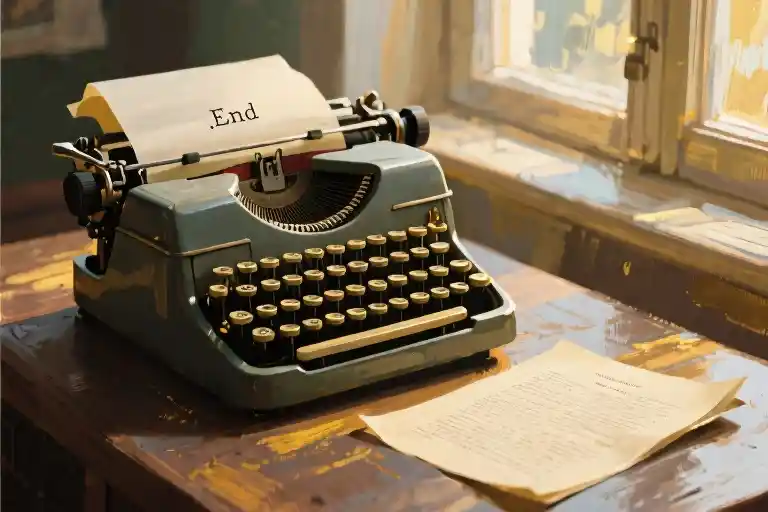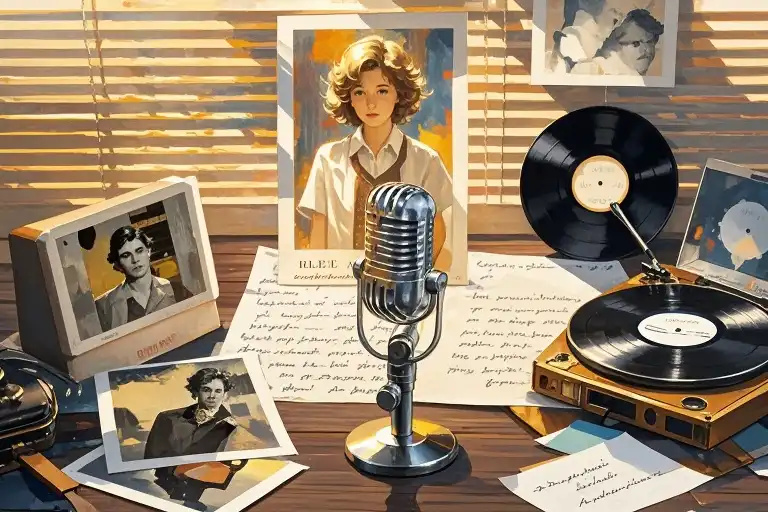The summer I turned eight, my mother laid down the law in our household library: “You can read anything on these shelves,” she said, tapping a finger on the spine of The Babysitters Club #47, “but once you start, you finish. No exceptions.” At the time, it felt like literary tyranny. I remember glaring at that particular paperback, its cheerful cover belying the hours of frustration Claudia’s latest antics would cause me. Why should I waste precious afternoon sunlight on chapters that made me groan when I could be climbing trees or drawing comics?
What began as a forced march through uninspiring stories became something far more valuable than either of us anticipated. Those tedious books—the ones with characters who changed personalities like socks, plots that meandered like lost tourists, and endings that landed with all the satisfaction of a deflating balloon—taught me to read like a writer. Without realizing it, I was developing an internal checklist: This scene works because… That dialogue falls flat when… The stories I loathed became my most instructive teachers, revealing the hidden machinery of compelling narratives through their very failures.
There’s an unspoken apprenticeship in persisting through mediocrity. While everyone celebrates finishing masterpieces, few discuss the education hidden in flawed attempts—not just in literature, but in every creative endeavor. The piano etude played badly twenty times before the fingers remember. The coding project that crashes repeatedly until the bug reveals its logic. Even Claudia’s inconsistent characterization eventually showed me how believable personalities emerge from specific details rather than broad stereotypes.
What felt like punishment became preparation. By analyzing why certain chapters made me check the page count while others made me forget dinner, I unconsciously absorbed narrative pacing. Noticing when secondary characters faded into wallpaper helped me recognize dimensionality in later readings. And those infuriating non-endings? They taught me more about structural payoff than any writing manual ever could.
This was never just about books. It was training for a fundamental life skill: extracting wisdom from disappointment. My mother’s rule forced me to sit with frustration long enough to understand its sources—a practice that later helped me dissect bad movies, flawed work projects, and even strained relationships with the same analytical curiosity. The books I hated didn’t just teach me about storytelling; they taught me how to learn from anything.
The Crimes of Bad Books
At eight years old, I developed a very specific set of literary grievances. Not the sophisticated criticism of a seasoned reader, but the visceral reactions of a child forced to finish every book she started. Three particular offenses stand out in my memory like warning flares in the dark forest of children’s literature.
First came the Pacing Disasters – those thick volumes where nothing consequential happened until page 197. I remember one ‘epic adventure’ where the protagonist spent 180 pages packing for a journey. The actual quest? A rushed afterthought in the final chapter. These books taught me to recognize when an author was padding word count rather than advancing story, a lesson that later helped me cut fluff from my own writing.
Then there were the Character Betrayals, epitomized by Claudia from The Babysitters Club. One book she’d be solving mysteries with Sherlock-level deduction, the next she’d forget how to use a doorbell. This inconsistency created a peculiar awareness – I began noticing when characters behaved according to plot demands rather than internal logic. Real people don’t flip between genius and idiocy based on a chapter’s needs.
Most infuriating were the Bait-and-Switch Books, promising pirate battles or dinosaur chases but delivering morality lectures. The covers showed spaceships; the contents contained classroom debates about sharing. This mismatch between expectation and reality trained me to spot authentic storytelling versus manipulative packaging – a skill that transfers unsettlingly well to detecting misleading advertisements and political speeches.
What fascinates me now isn’t just how bad these books were, but how clearly their flaws imprinted on me. The ‘good’ stories flowed by effortlessly, leaving little trace. But the terrible ones? Their failures became reference points, negative examples that shaped my understanding of narrative craft far more than any writing manual could. Every agonizing page turn became a masterclass in what not to do – if I paid attention.
This wasn’t just about enduring bad literature. It was my first unconscious training in pattern recognition, my earliest lessons in separating substance from packaging. The very books I wanted to throw against the wall were building the foundation for critical thinking – though I wouldn’t realize it until years later when facing equally frustrating but more consequential challenges.
What Bad Books Taught Me About Crafting Stories
Forced to finish every book I started as a child, I developed an accidental education in storytelling. Those painfully dull chapters and frustrating characters became my unlikeliest mentors, revealing patterns that later helped me recognize – and create – compelling narratives.
The Hook That Won’t Let Go
Terrible books taught me that effective chapters operate like tidal pools. Just when you think you can walk away, they leave one intriguing element exposed – a half-answered question, an unexpected reaction, a looming deadline. I noticed this first through its absence: in books where nothing happened for dozens of pages, there was never that little claw at the end of a chapter pulling me forward. The memorable ones always ended with someone whispering “Meet me at midnight” or a character discovering an object that shouldn’t exist.
This realization translated beyond reading. When giving presentations years later, I’d structure them like those good chapters – each section ending with a question or revelation that made the next segment unavoidable. The principle held true whether writing emails or designing workshops: people engage when you give them reasons to care about what comes next.
Characters That Breathe
The most instructive character failures weren’t the obviously villainous ones, but those who simply didn’t add up. Claudia from The Babysitters Club became my case study – intelligent and artistic in one chapter, suddenly oblivious in another with no explanation. Contrasted with characters who felt real (even when I disliked them), the difference became clear: believable people contain contradictions, but those contradictions have internal logic.
A neighbor might generously volunteer at shelters yet refuse to lend sugar. That makes psychological sense – perhaps past trauma shaped their worldview. But when fictional characters shift behaviors purely to serve plot needs, readers detect the machinery. This lesson proved invaluable when I began conducting user research interviews years later. Authentic human responses follow hidden patterns; fabricated ones feel convenient.
The Math of Satisfying Endings
Bad endings share a common trait – they forget their promises. A mystery that spends chapters building tension then resolves with “and it was all a dream” violates narrative algebra. Through dozens of disappointing finales, I identified an unspoken equation: reader satisfaction depends more on honoring established elements than delivering shock value.
This became my personal metric for projects beyond books. When wrapping up work presentations, I’d mentally check: Have I addressed the questions raised at the start? Does the conclusion flow from the evidence presented? The same principle applies to difficult conversations – resolutions feel satisfying when they acknowledge the journey rather than pretending it didn’t happen.
These lessons from awful books formed my earliest understanding of narrative structure – knowledge no writing manual could have delivered so memorably. Sometimes education arrives disguised as frustration, if we’re willing to sit with it long enough to understand why it bothers us.
The Hidden Curriculum of Terrible Books
That childhood rule I resented so much turned out to be training wheels for a fundamental life skill. Finishing bad books against my will became an accidental masterclass in developing what psychologists call ‘delayed gratification muscles.’ Every agonizing page turned built endurance – not just for reading, but for all those adult tasks that feel like watching paint dry while standing on legos.
What began as forced compliance gradually rewired my brain. Around the third dreadful novel I powered through, something shifted. Instead of just suffering through flat characters and meandering plots, I started interrogating them. Why did protagonist #5 feel like a cardboard cutout while the grocery store cashier in chapter 3 seemed oddly compelling? How did that mystery novel spoil its own twist by page 30? The books weren’t getting better – I was getting sharper.
This transformation mirrors what musicians experience during scale practice. My piano teacher friend describes it as ‘learning to love your mistakes.’ When you’re forced to repeat a problematic passage instead of skipping ahead, you develop X-ray hearing. Those wrong notes become signposts pointing toward deeper understanding of music theory. Similarly, enduring bad writing trains readers to spot the structural beams holding up stories – where the load-bearing walls are placed, which joints creak under pressure.
The magic happened in that uncomfortable space between obligation and observation. Staying with mediocre material forced me to engage critically rather than consume passively. I wasn’t just learning what good writing looked like – I was learning how it worked. Like taking apart a clock to understand time, analyzing failures revealed mechanisms that successes often conceal beneath their polish.
This principle extends far beyond books. My college roommate applied the same approach to his computer science projects. While others abandoned buggy code, he’d document every glitch like a detective at a crime scene. ‘Errors are just the program explaining how it thinks,’ he’d say. Twenty years later, he heads a AI ethics team because he learned to listen to what malfunctions reveal about systems.
That childhood rule gifted me something more valuable than literary taste – it taught me how to extract wisdom from experiences I’d rather avoid. The books didn’t need to be good for me to get better.
Applying the “Bad Book Analysis” to Life
The same analytical muscles I developed slogging through terrible children’s books became unexpectedly useful far beyond the bookshelf. What started as my mother’s arbitrary reading rule revealed itself as a universal framework for extracting value from any disappointing experience. Here’s how to adapt that childhood lesson into a practical adult toolkit.
The 3-Step Framework
- Completion Before Judgment
Forcing myself to finish even awful books trained me to separate initial frustration from substantive critique. Apply this to work projects by establishing a “minimum viable completion” point before evaluating – whether that’s submitting a first draft, running three test iterations, or completing a 30-day trial period. The worst ideas often contain hidden seeds of useful innovation if we resist the urge to abandon them prematurely. - Pain Point Documentation
Just as I mentally cataloged why certain book chapters made me check the page count, create an “irritation journal” for frustrating experiences. Note precise moments when:
- Your attention wanders during meetings
- A workout routine starts feeling tedious
- A recipe disappoints despite following instructions
These visceral reactions pinpoint where systems break down.
- Reverse Engineering Excellence
By studying why Claudia in The Babysitters Club felt artificial (her “quirks” were tell-don’t-show affectations), I unconsciously compiled a mental checklist for authentic characterization. Translate this by asking:
- What exactly made this presentation/trip/meal frustrating?
- How would the ideal version differ?
- What specific elements could be transplanted elsewhere?
The Disappointment Analysis Template
| Element | Book Example | Life Application Example | Ideal Version Characteristics |
|---|---|---|---|
| Pacing | 50-page info-dump prologue | Overlong team status meetings | Segmented topics with clear transitions |
| Payoff | Unsolved mystery subplot | Inconclusive project post-mortem | Actionable insights with next steps |
| Authenticity | Stereotyped “nerd” character | Corporate diversity training clichés | Nuanced, lived-experience narratives |
Becoming Your Own Editor
The final transformation occurs when you apply this analytical lens to your own creations. Just as I began spotting clumsy exposition in novels, you’ll start noticing:
- Email threads that replicate bad books’ meandering subplots
- Cooking experiments with the same payoff issues as unsatisfying endings
- Work presentations suffering from “cardboard character” syndrome
This isn’t about perfectionism – it’s about pattern recognition. My childhood resentment toward that reading rule masked its real gift: developing what chess players call “tactical sight,” the ability to instantly recognize both problems and opportunities in any system. The books were never the point; they were just the first training ground.
What mediocre experience have you endured that accidentally taught you more than a polished success?
The Hidden Curriculum of Bad Books
Every book I reluctantly finished as a child became an accidental masterclass in storytelling. Those afternoons spent counting down pages until liberation from some tedious middle-grade novel taught me more about narrative craft than any writing guide ever could. The books we hate often illuminate the rules of engagement more clearly than those we love – precisely because their failures are so glaring.
Three lessons emerged from my involuntary study of literary disappointments:
1. The Rhythm of Engagement
Terrible books have a distinctive pulse – long stretches of monotony punctuated by moments of mild interest. I learned to identify the structural reasons why certain chapters made me check the clock while others temporarily eased my suffering. Well-placed hooks at chapter endings, gradual escalation of stakes, and strategic reveals all became visible through their absence. The worst offenders would devote entire sections to describing breakfast routines or shoe collections, teaching me through negative example that every scene must earn its place.
2. The Anatomy of Believable Characters
Claudia from The Babysitters Club became my unwitting case study in inconsistent characterization. Her sudden personality shifts between books (artistic genius in one volume, clueless ditz in the next) demonstrated how not to build reader trust. Contrasted against characters who felt authentically complex, these cardboard cutouts revealed the importance of core traits, gradual development, and internal logic. I began noticing when authors respected their characters’ intelligence versus when they manipulated them for plot convenience.
3. The Aftertaste of Endings
Nothing trains your palate for satisfying conclusions like enduring terrible ones. The books that made me want to mail the author angry notes shared common flaws – unresolved subplots, unearned redemption arcs, or last-minute deus ex machina solutions. Through repeated exposure to these failures, I developed an instinct for narrative payoff. The best endings felt inevitable yet surprising, while the worst either dragged on past their natural stopping point or stopped abruptly like a canceled TV show.
This unintended education extends far beyond literature. The same analytical framework applies to any creative work – films that squander promising premises, video games with clunky mechanics, even poorly designed products. What we dislike teaches us to articulate what we value. Those childhood reading sessions became my first training in critical thinking, a skill that transfers to evaluating job candidates, business proposals, or political arguments.
The books you can’t wait to finish often linger longest in your memory – not for their quality, but for the clarity of their mistakes. They become invisible mentors, showing through negative space how excellence operates. Your most frustrating experiences might be conducting the same covert education right now. What poorly designed product, inefficient process, or disappointing project is currently teaching you through its failures?
Which ‘bad teacher’ experience unexpectedly improved your critical thinking?





